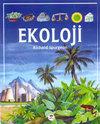Assessment of the Heavy Metal Contents of Sardina pilchardus Sold in Izmir, Turkey
Q3 Environmental Science
引用次数: 12
Abstract
The total heavy metal (chromium (Cr), copper (Cu), arsenic (As), cadmium (Cd), mercury (Hg), and lead (Pb)) present in the muscle tissue of sardine was determined by inductively coupled plasma-mass spectroscopy (ICP-MS) after microwave wet digestion during the winter season of 2010. The mean concentrations of heavy metals in the sardine muscle tissues was 0.21 mg Cr/kg, 1.00 mg Cu/kg, 1.49 mg As/ kg, 0.46 mg Cd/kg, 0.03 mg Hg/kg, and 0.14 mg Pb/kg wet weight. It was found that the cadmium concentrations in the sardine fish samples provided from four fish markets with the exception of one fish market, exceeded the value of 0.05 mg Cd/kg (wet weight) limit which is permitted nationally and internationally. The level of arsenic for one of each group of sardines sampled was higher than the permitted limit of arsenic according to the Australia Food Standard (1.00 mg As/kg). As a result, the comprehensive and periodic controls of heavy metals in fish are important in terms of public and environmental health.土耳其伊兹密尔市售沙丁鱼的重金属含量评估
2010年冬季,采用微波湿消化后电感耦合等离子体质谱法(ICP-MS)测定了沙丁鱼肌肉组织中重金属(铬(Cr)、铜(Cu)、砷(As)、镉(Cd)、汞(Hg)和铅(Pb))的含量。沙丁鱼肌肉组织中重金属平均浓度分别为0.21 mg Cr/kg、1.00 mg Cu/kg、1.49 mg As/ kg、0.46 mg Cd/kg、0.03 mg Hg/kg和0.14 mg Pb/kg湿重。调查发现,除一个市场外,四个市场沙丁鱼样本的镉含量均超过国家和国际规定的0.05 mg Cd/kg(湿重)限值。抽样的每组沙丁鱼中有一组的砷含量高于澳大利亚食品标准(每公斤1.00毫克砷)的允许限量。因此,就公众和环境健康而言,全面和定期控制鱼类中的重金属非常重要。
本文章由计算机程序翻译,如有差异,请以英文原文为准。
求助全文
约1分钟内获得全文
求助全文
来源期刊

Ekoloji
环境科学-生态学
CiteScore
1.10
自引率
0.00%
发文量
0
审稿时长
>12 weeks
期刊介绍:
Cessation. Ekoloji is an international journal that focuses on papers that report results from original research on all disciplines engaged in the field of environmental research. We welcome articles that cover the entire spectrum of environmental problems and environmental pollutants, whether chemical, biological or physical. Its coverage extends to all environmentally related issues: air and water pollution, solid waste, noise, recycling, natural resources, ecology and environmental protection. It includes articles on basic and applied environmental pollution research, including environmental engineering and environmental health. All types of pollution are covered, including atmospheric pollutants, detergents, fertilizers, industrial effluents, metals, mining wastes, oil, pesticides, plastics, radioactive materials and sewage. It also includes research papers on ecological and environmental issues such as climate change, biodiversity. The primary criteria for publication are scientific quality and ecological/environmental significance.
The journal will be read and contributed to by biologists, applied ecologists, environmental scientists, natural resource specialists, environmental engineers, environmental health specialists, agro-ecologists, veterinaries, agricultural engineers, landscape planners and designers. The journal welcomes full "research papers" and short "research notes", only in the English language.
 求助内容:
求助内容: 应助结果提醒方式:
应助结果提醒方式:


